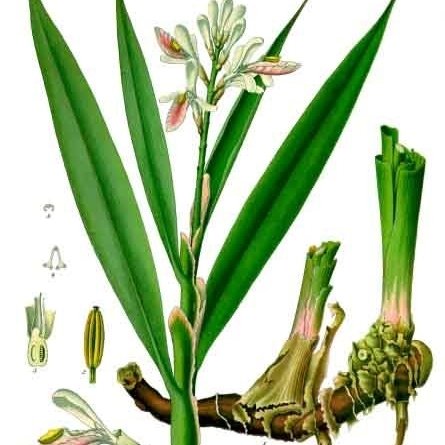Rhizomes tuberous. Pseudostems ca. 2 m. Ligule suborbicular, ca. 5 mm; petiole ca. 6 mm; leaf blade oblong or lanceolate, 25--35 × 6--10 cm, glabrous or abaxially pubescent, base attenuate, apex acute or acuminate. Panicles ca. 20 × 30 cm; rachis glabrous or pubescent; branches many, 2--4 cm, 3--6-flowered; bracts and bracteoles persistent; bracteoles lanceolate, 5--8 mm. Flowers green-white, fragrant. Calyx tubular, 6--10 mm, persistent. Corolla tube 6--10 mm; lobes oblong, 1.6--1.8 cm. Lateral staminodes purple, subulate or linear, 2--10 mm. Labellum white with red lines, obovate-spatulate, ca. 2 cm, apex deeply 2-cleft. Filament ca. 1 cm; anther ca. 7 mm. Capsule brown or red when dry, oblong, slightly contracted at middle, 1--1.5 cm × ca. 7 mm, thin, glabrous. Seeds 3--6. Fl. May--Aug, fr. Sep--Nov.


